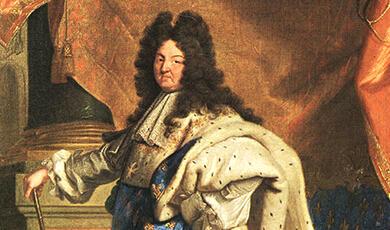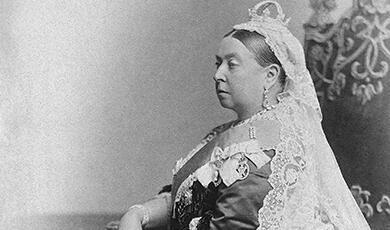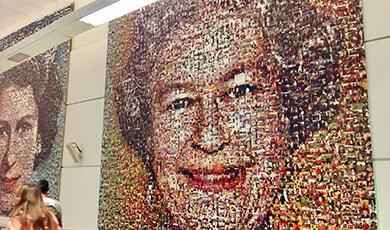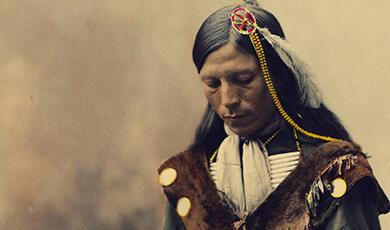Press release: Portraits of Queen Elizabeth II

Mould looks at some of the 412 official portraits of Queen Elizabeth II
"High-Wire Artistic Act" of rapid sittings, freighted with audience expectations
"No precedent in art history" for the Lightness of Being portrait
Embargo: Thursday 2 March 7pm
We would like to invite you to a lecture on Portraits of Queen Elizabeth II: the Artists’ Challenges, by Philip Mould on Thursday.
In this lecture Art historian and dealer Philip Mould will discuss some of the highlights of the 412 official portraits of the late Queen Elizabeth II, looking at the challenges of the “high-wire artistic act” of making a portrait with a sitter who might only be in the room for half an hour.
“Empathise for a moment with the quandaries and contradictions facing the portraitist who is first ushered into the royal presence: apart from capturing a recognisable likeness, where on earth is a portraitist supposed to start? Symbolic objects, backgrounds, and outfits are the easy bit. But how are they going to capture the spirit of a person who is both crowned Monarch and servant of her “subjects”? Who symbolises and stands as figurehead to the nation and the Commonwealth, but also as comforter to her people? Who represents solid continuity, but also aims for progress and enlightened change? Someone who is one of us, but clearly not one of us. Who is both ordinary and utterly extraordinary. How in a single physical image are all these abstract concepts portrayable?” Mould will ask.
He will show how the royal portraitists were influenced by art history, and divide the portraits into three key phases:
- “The first category includes two portraits of the young, newly-crowned Elizabeth. They were made in 1953 and 1955 respectively and are amongst the best-known and most influential of all: Cecil Beaton’s coronation photograph, and what we call ‘the first Annigoni’;
- “The second category, which I call the Middle Ages, takes us from the 70s to the 90s, and demonstrates a democratizing change of mood. This comprises portraits by (the two Michaels), Noakes and Leonard;
- “And the third category reveals what I call ‘the Venerable Queen’ – powerful pictures from the last three decades of her reign. These include Freud, Levine, and Leibovitz – the latter two being probably the most successful.”
Mould writes particularly revealingly about the Justin Mortimer and Lucian Freud portraits
“Mortimer made a courageous attempt. This, from 1997, is certainly striking. Mortimer painted the Queen’s head floating above her body to illustrate her detachment and isolation from modern life. “I felt she was from another era,” he told the Wall Street Journal. “I don’t have anything in common with her apart from being English.” Uncomfortably evocative of Charles I’s gory end on the executioners’ block, the detached head is a bold but, to my mind, heavy handed attempt to blend ceremonial portraiture with artistic radicalism (despite the twain’s inherent incompatibility!). But I can’t help admiring Mortimer’s all-consuming response to where the sitting took place: the infamous Yellow Drawing Room!”
“In 1999 Freud agreed to paint the Queen after a conversation with Sir Robert Fellowes, who had recently retired as her Private Secretary and was also being painted by Freud. An attempt to organize such a portrait had apparently failed six years earlier because Freud insisted on seventy-two sittings and demanded that the Queen come to his own studio. She wasn’t up for that. But he subsequently relaxed his demands, and Fellowes got Freud to accept just ten sittings. In return the Queen had to settle for an almost miniature-sized portrait (originally just 20 centimetres high) and agreed to sit in the more artistically conducive environment of the conservation studio at St James’s Palace.”
“Freud’s notorious absence of sentimentality and searing pursuit of realism always meant that this commission was not going to be straightforward. He did not disappoint. The Guardian thought the result was probably the best royal portrait for 150 years. The Sun said Freud should be locked in the tower.”
He goes on to discuss the famous Chris Levine Lightness of Being image of the Queen, “By dint of her closed eyes the Queen appears affectingly unguarded. While its brightness is humanly transforming, there is sufficient honesty in the lined, powdered skin and enhanced lipstick to provide realism. The message, heightened by a visually conspicuous aura, is of meditative serenity and transcendence. The resting Queen is utterly novel for having combined modern idioms with the magisterial. I can find no precedent for it in art history, with the possible exception of death masks, or deathbed portraits, and their sense of acquiescent finality.”
ENDS
Notes to Editors
Read more about Philip Mould OBE
You can sign up to watch the hybrid lecture online or in person; or email us for an embargoed transcript: l.graves@gresham.ac.uk / 07799 738 439


 Login
Login



